Sound: 









Value: 









(Read about our ratings)
Measurements can be found by clicking this link.
I’m surprised that Emotiva didn’t get into the headphone business a long time ago, considering it’s in so many other areas of the audio business. But I’m not surprised that the Airmotiv GR1 headphones ($299, all prices USD) represent a somewhat fresh approach, because Emotiva’s always been fairly aggressive about moving into new technologies.
GR1 stands for Graphene Reference 1, which refers to a material used in the diaphragm of the headphones’ drivers. Graphene is carbon, in a single-atom-thick honeycomb layer. When the scientists who first isolated graphene won the 2010 Nobel Prize in Physics, it was noted that a one-square-meter sheet could support a 4kg cat while weighing only as much as one of the cat’s whiskers. So like other good driver materials, it’s light and strong. Graphene has been pitched as a material for headphone drivers for a couple of years now, but these are the first headphones I can remember seeing that use it. (I vaguely recall having heard, and may even have reviewed, some earphones with graphene diaphragms.)
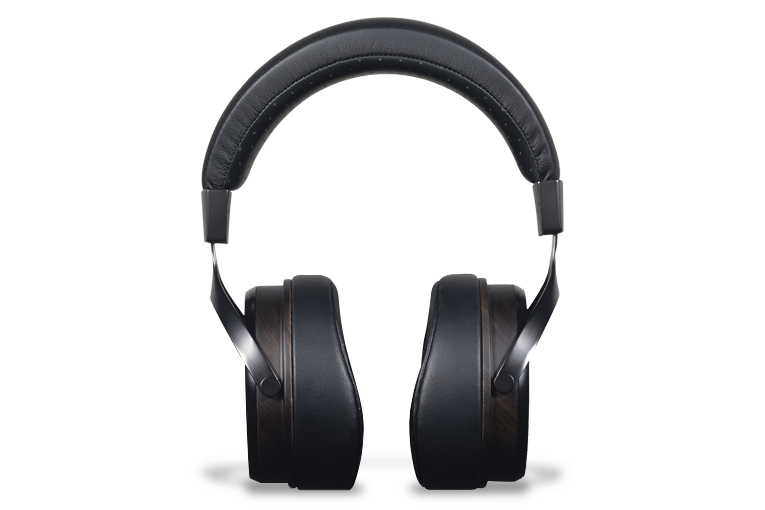
In the GR1 headphones’ driver diaphragms, layers of graphene are bonded to a central layer of polycarbonate. This layered construction should stiffen the 50mm diaphragm and damp high-frequency resonances.
Otherwise, the GR1s look like pretty standard audiophile headphones. They’re a semi-open-back design with plush earpads covered in vegan leather. The rated impedance is 32 ohms, and rated sensitivity is 106dB, so these should deliver good performance even when plugged straight into a smartphone, tablet, or computer.
I’m no believer in “magic” driver materials—I know from lots of listening tests and measurements that good headphones can be made using a variety of materials and technologies—but I was certainly curious to find out what graphene drivers might sound like.
In the box
The package includes the headphones and an 81′ (2.1m) cable tipped in a stereo 3.5mm (1/8″) unbalanced stereo plug on the source end and mono 2.5mm (3/32″) plugs on the ends that plug into the headphones. There’s also a nice semi-hardshell, zippered travel case.
Use
The GR1s are fairly compact, yet my earlobes fit easily into the earpads with no rubbing. The headphones also had what felt like a nearly perfect amount of clamping force—strong enough to where they didn’t fall forward or back when I shook my head up and down, yet gentle enough that they didn’t mash my temples uncomfortably.
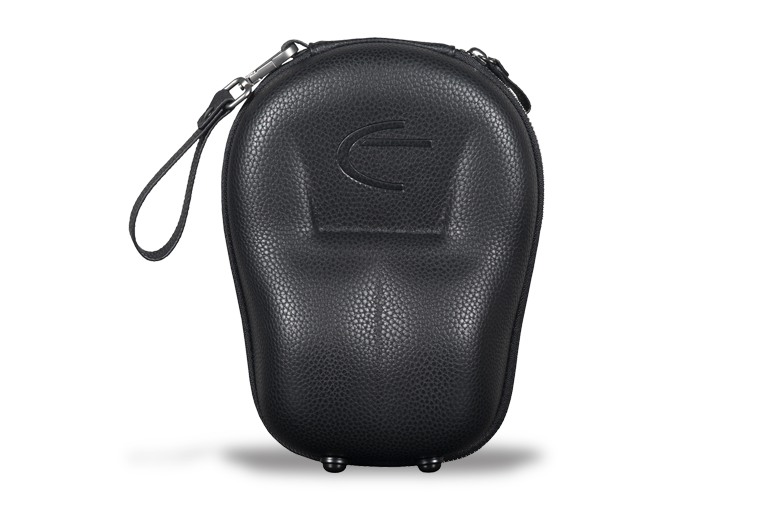
Even with conservatively mastered albums, the GR1s delivered plenty of volume even when plugged straight into my Samsung Galaxy S10 phone. Still, I did most of my listening using an AudioQuest DragonFly Cobalt DAC-headphone amp (SoundStage! Simplifi, October 2019), just to make sure the GR1s were getting plenty of power.
Sound
I’d describe the GR1s’ sonic signature as basically neutral, clean, and uncolored, with some extra warmth in the upper bass. This was easy to hear on Holly Cole’s version of “Good Time Charlie’s Got the Blues” (Night, 16-bit/44.1kHz FLAC, Rumpus Room Records / Qobuz). I was thrilled to hear how good the GR1s’ voice reproduction was, conveying Cole’s vocal clearly with little to no sibilance. The headphones also delivered a nice sense of space on the piano and the backing vocals. The only coloration that really jumped out at me was that bit of extra oomph I mentioned in the bass (I guessed around 100 to 150Hz), which made the double bass sound a little bloated and tubby.
When I switched to jazz vocalist Susannah McCorkle’s No More Blues (16/44.1 FLAC, Concord/Qobuz), I got a similar result, although I didn’t notice the extra-full upper bass because the bass on this album isn’t as prominent. Again, the voice had at most a trace of sibilance (even though this vocal recording is a hair bright), and all the instruments sounded uncolored—most notably guitarist Emily Remler’s extremely kick-ass chord solo on “Swing That Music,” which sounded like she played it on an acoustic archtop guitar, or maybe a miked electric archtop with the amp barely on. True to the tune’s name, the whole ensemble swung really, really hard, and I loved that the GR1s made it easy to hear every instrument in the group (voice, piano, guitar, clarinet, bass, and drums) clearly.
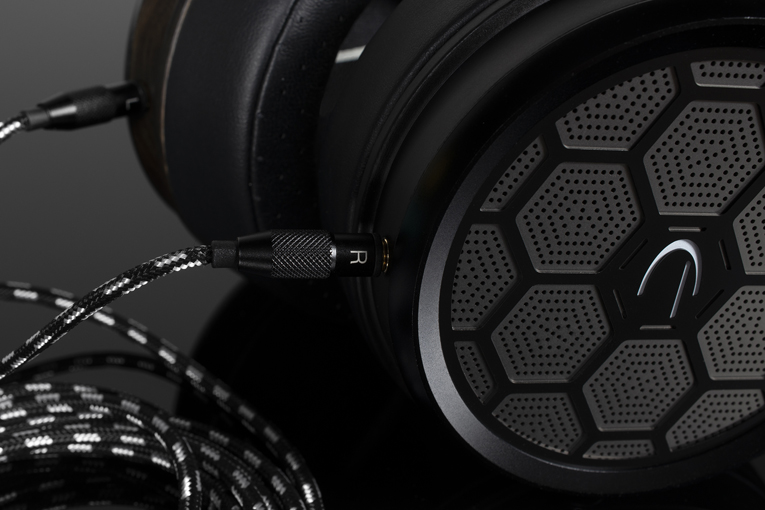
I wanted a recording with thin, potentially screechy treble to see if the GR1s’ top end was really as smooth as it seemed, so I put on “Fireman Ring the Bell” from blues guitarist/singer R.L. Burnside’s Acoustic Stories (16/44.1 FLAC, Coolstream/Qobuz), which has the classic, gritty sound of a relatively small-bodied acoustic guitar played with what sounds like a slide made from copper pipe. I could hear a little upper-bass exaggeration of the body resonance of the guitar, but more important was that the scraping, grinding sound of the guitar with the slide was dead-on (speaking as someone who has tried to play slide with copper pipe). And Burnside’s voice sounded natural and clear; I was worried that the somewhat generous upper bass might make it sound bloated, but no.
Fortunately, when I wanted something more dynamic and bassy and hip-hop-like, Burnside’s catalog had that, too: Wish I Was in Heaven Sitting Down (16/44.1 FLAC, Fat Possum / Qobuz), his fantastic 2000 album that combines Burnside’s vocals; traditional blues instruments like upright piano, harmonica, organ, and distorted electric guitar; and all sorts of electronic effects and instruments, filtered through the chopped production techniques popular in 1990s hip-hop. Almost every tune is packed with cool tidbits to listen to, with each little sound in just the right space and place, and I was thrilled at the way the GR1s picked them all out easily without seeming to color them or resorting to the usual headphone-tuning trick of pumping up the treble to fool the noobs.
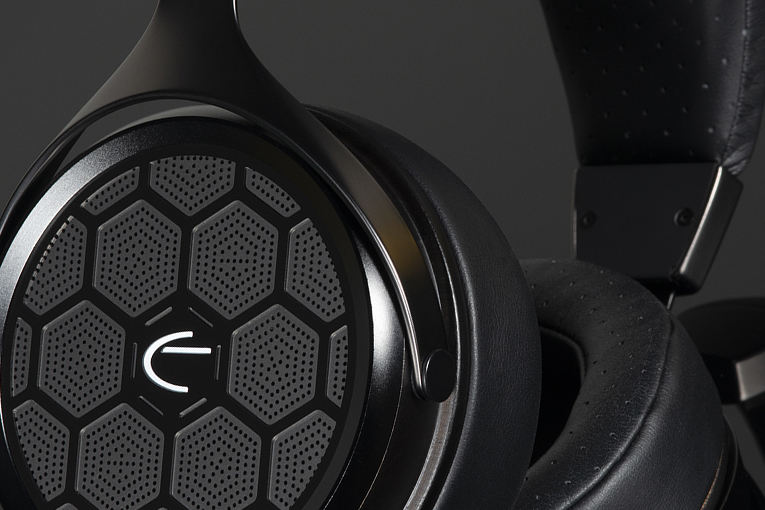
I did occasionally get the idea that the GR1s are a little elevated around 2 or 3kHz, but where and how high to put that characteristic lower-treble peak that’s in most headphones is very much a judgment call. So unless headphones are way off—with a huge peak in that area, or no peak at all—I’m hesitant to call it a coloration. I certainly wouldn’t recommend EQing the headphones in that area; I tried backing off on the 2kHz and 4kHz sliders on my phone’s EQ, but this sacrificed some of the clarity I liked so much in the GR1s, and it dulled the sound a bit.
I ended up listening to Wish I Was in Heaven Sitting Down a couple of times through, at a louder volume than I normally would, just because I kept hearing subtleties that had eluded me before: little percussion parts, distant backing vocals, and squirty synth sounds deep in the mix; the (synthesized) pipe organ droning through much of “Got Messed Up”; the brand of the electric piano backing “Bad Luck City” (Wurlitzer, definitely); and more. One caveat, though: I listened to this pretty loud, and once in a while, when it was really cranked, I heard a little bit of distortion. That’s partly because these headphones’ sensitivity is high. The other headphones I compared the GR1s with couldn’t play loud enough off the DragonFly Cobalt to distort.
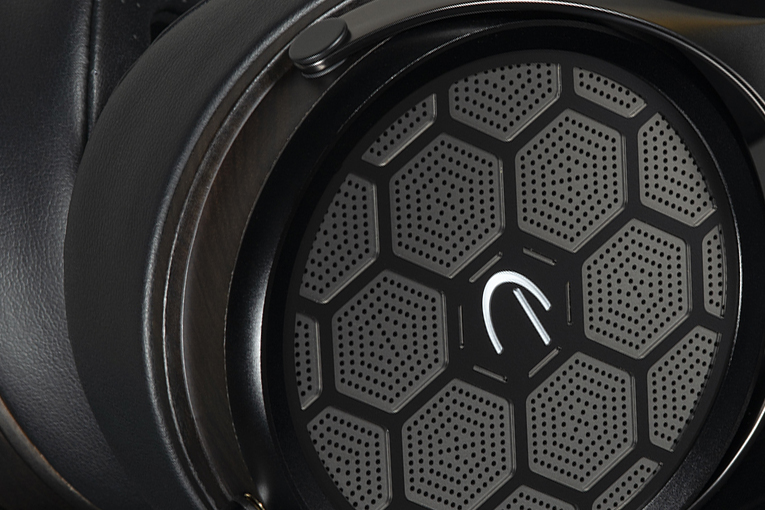
Having heard what the GR1s could do with acoustic guitar, I had to wonder what they could do with orchestral strings, so I put on violinist Hilary Hahn’s brand-new release Paris (24/48 FLAC, Deutsche Grammophon / Qobuz). And yeah, the GR1s were as nice to her fiddle as they were to Burnside’s slide guitar. On the frantic second movement, “II. Scherzo: Vivacissimo,” from Prokofiev’s Violin Concerto No. 1 in D Major, Op. 19, the GR1s cleanly reproduced the torrents of notes coming from Hahn’s violin in the first several bars, and also captured the shift in sound as she slid into the more expressive glissandos about one minute in, as well as the weird, wah-wah-like sound she gets at about 2:20. I could hear every detail and subtlety, yet there was no audible trace of treble boost. But yeah, I could hear a little extra upper bass in the timpani and double-bass section.
Comparison
I compared the Airmotiv GR1s with the HiFiMan Sundara ($349) and the Philips Fidelio X3 ($349) headphones, which are both relatively large, open-back designs.
I used “Free Man in Paris,” from Joni Mitchell’s Court and Spark (24/192 FLAC, Rhino-Elektra/Qobuz), as my substitute for Tracy Chapman’s “Fast Car,” from which I’m taking a break for a while. But “Free Man” told me a lot about these headphones. I loved the fidelity and clarity I heard from the GR1s, although once again, that upper bass was a little elevated. This didn’t really color the music in this case, so much as just add the impression of a little extra bass.
With the Sundaras, the treble was definitely elevated, the bass was a lot lighter, and Mitchell’s voice moved further to the front of the mix. There was more impression of detail, although much of that was due to the tonal balance tilt. The brighter sound meant that I had to listen at a lower level or ear fatigue quickly set in. The music was still enjoyable at that lower level, although not particularly grooving. On R.L. Burnside’s “Got Messed Up,” that was a problem, because this tune has one of the hippest grooves I’ve ever heard, and I didn’t really get that through the Sundaras.
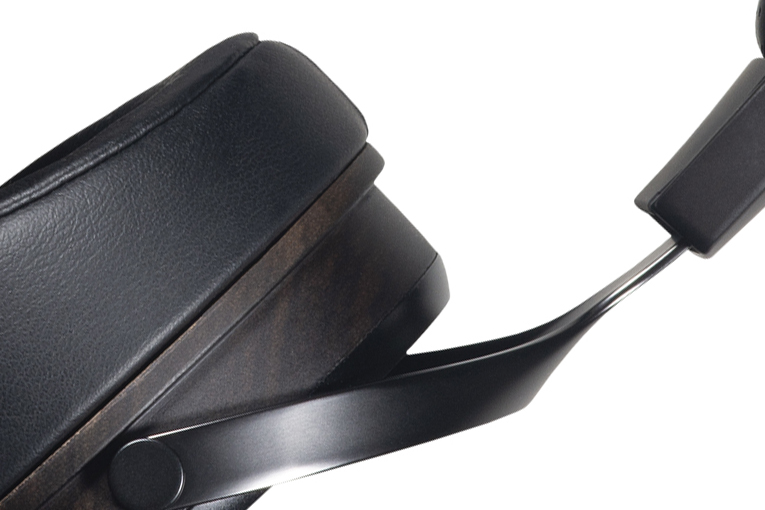
The Fidelio X3s were much more like the GR1s—no surprise, as they’re both dynamic-driver headphones, while the Sundaras are planar-magnetic. In fact, there wasn’t an obvious difference in the sound when I switched to the Fidelio X3s. They grooved hard with plenty of detail and little coloration on “Got Messed Up,” and their clarity pulled just as much out of “Free Man in Paris” as the GR1s did. The GR1s sounded perhaps a little smoother and softer on Mitchell’s voice, but slightly boosted in the lower treble (about 3kHz) relative to the Fidelio X3s—but the Fidelio X3s seemed a little boosted relative to the GR1s in the mid-treble, around 5 or 6kHz. The Fidelio X3s don’t have that extra upper-bass oomph of the GR1s, though. I had to conclude that the two are roughly equal in quality—I tended to fall in love with whichever one I was wearing.
Conclusion
I think the Emotiva Airmotiv GR1s are one of your best options in the crowded competition of $300-ish open-back audiophile headphones. They’re definitely one of the best first efforts at headphones that I’ve ever heard.
. . . Brent Butterworth
Associated Equipment
- Smartphone: Samsung Galaxy S10
- DAC-headphone amp: AudioQuest DragonFly Cobalt
Emotiva Airmotiv GR1 Headphones
Price: $299 USD.
Warranty: One year.
Emotiva Audio Corporation
135 SE Parkway Ct.
Franklin, TN 37064
Phone: (615) 790-6754
Website: www.emotiva.com







